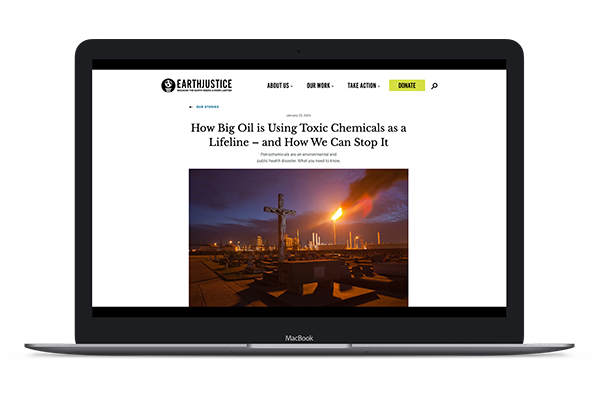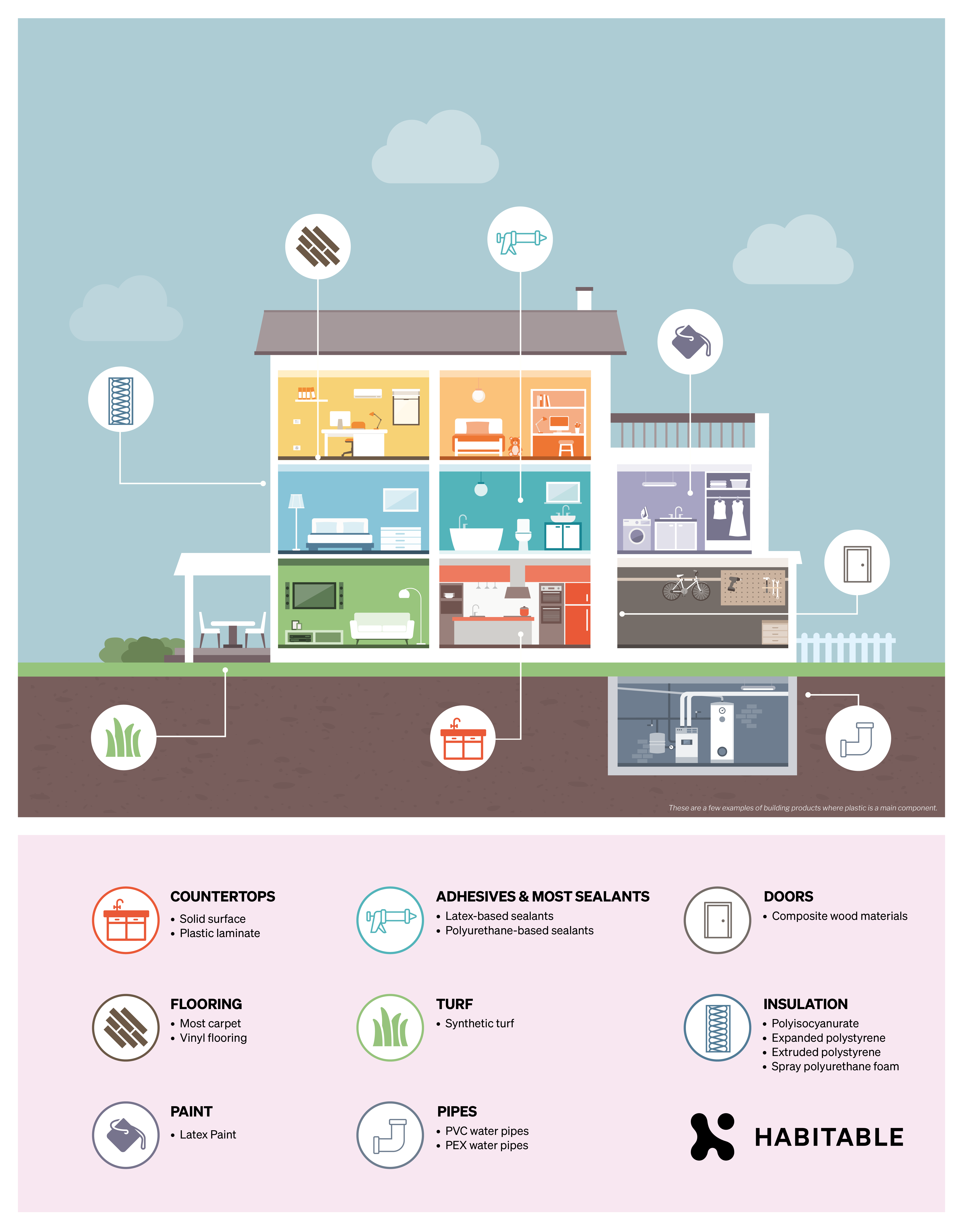 Policy Brief + Recommendations
Policy Brief + Recommendations
Despite its harmful effects, BADGE is not included in Europe’s new food safety guidelines, which focus on bisphenol A (BPA) and a few other bisphenols, highlighting regulatory gaps in addressing this chemical commonly found in common materials.
The Resource Efficiency Collective at Cambridge University explores how to deliver future energy and material services while reducing resource use and environmental impact, aiming to find suitable metrics and solutions for a more resource-efficient society.

Project Drawdown is a nonprofit organization dedicated to advancing effective, science-based climate solutions, fostering bold new climate leadership, and promoting new narratives and voices to help the world stop climate change.

Earthjustice lays out the pillars of the argument against the oil and gas industry’s push for a petrochemical boom, which threatens to lock in more climate pollution and toxic chemicals in already overburdened low-income and minority communities.

This podcast conversation explores the intersection of climate change and chemical pollution.
Highlighting opportunities to address both crises simultaneously while improving public health, equity, and economic vitality, featuring experts Dr. Elizabeth Sawin and Beverley Thorpe.

In this article, journalists investigate the American Chemistry Council’s promotion of chemical recycling, contrasting it with environmentalists’ concerns and highlighting issues found at Braven Environmental’s facility, suggesting that chemical recycling may not be as environmentally friendly or commercially viable as claimed.
Who do you think would win at the sustainability tug-o-war? Team safer materials or team low-carbon products?
Healthy Building Network (HBN) has often heard these two issues framed as a competition–a false choice. Instead, we know that these two powerhouses must work together for optimal results.
In 2022, HBN and Perkins & Will published a study highlighting building products that can do just that: optimize material health and lower their carbon footprint. This study identified key drivers and paths towards low embodied carbon and safer materials as well as when to consider and optimize both at the same time. To illustrate this point, we plotted an actionable path for project teams using flooring products as an example.
Team Low-Carbon Products: The embodied carbon of building materials contribute a whopping 11% to global carbon emissions.1 Most of these emissions happen before that product even gets installed. Additionally, the poorest countries and regions are those most impacted in terms of damage and loss of life by the effects of climate change.2 “That 11% might sound small compared with the impact of operational energy (28%), but for new construction, embodied carbon matters just as much as energy efficiency and renewables. That’s because the emissions we produce between now and 2050 will determine whether we meet the goals of the 2015 Paris climate accord and prevent the worst effects of climate change,” explains a BuildingGreen report.
Team Safer Materials: We spend 90% of our time indoors, and hundreds of industrial chemicals are found in our indoor spaces— in the dust, in the air we breathe, and in our bodies.3 The health impact of building materials are not limited to their time in use in the building, they often occur during manufacturing, installation, and at the product’s end of life. People living in close proximity to industrial facilities experience persistently worse air quality than average and exposure to industrial pollutants disproportionately impacts people of color.4 Another report suggests man-made pollution has exceeded the Earth’s safe operating boundaries.5 “Transgressing a boundary increases the risk that human activities could inadvertently drive the Earth System into a much less hospitable state, damaging efforts to reduce poverty and leading to a deterioration of human wellbeing in many parts of the world, including wealthy countries.” Professor Will Steffen, researcher at the Centre and the Australian National University, Canberra.6


Reducing toxic chemical use and the emissions associated with building materials NOW is a vital sustainability strategy for any project team.
The Research:
To identify the key drivers of embodied carbon and the key opportunities to reduce embodied carbon for each product type we read Environmental Product Declarations (EPDs), reviewed literature and data compilations, and conducted manufacturer interviews. The hazards associated with flooring products, the chemicals used to make those materials and the hazards associated with the chemicals used to install those products were collected using InformedTM product guidance and hazard data in the Pharos database.
Embodied Carbon:
Our research concluded that flooring products’ embodied carbon impacts are mostly associated with the raw material supply. The biggest opportunities to reduce embodied carbon in flooring comes from choosing a different product type that uses less impactful raw materials as well as products with longer service life. Carpet was consistently the most impactful product type due in part to its short service life. Plant-based flooring products, such as wood and natural cork, were consistently the least impactful.
Material Health:
Not surprisingly, the biggest opportunities to avoid chemicals of concern in flooring come from choosing a product type with typically fewer chemicals of concern. Products made from plastic, such as vinyl, nylon, or polyurethane tend to use more hazardous chemicals during manufacturing, installation, use, and end of life, than mineral or plant-based products. Selecting a product that is yellow or above in InformedTM color ranking Flooring Guidance, such as wood or linoleum, or even a non-vinyl resilient flooring will minimize the use of hazardous chemicals. Products in the red zone such as vinyl and carpet, should be avoided.
Conclusion:
When we looked at the opportunities to improve embodied carbon and improve material health for flooring we found that they were largely complementary.
- Use flooring with a long service life. Avoid products with a short service life, like carpet, and select a product with a long service life, like wood.
- Choose biobased product types. Linoleum, wood, and cork are all flooring product types that were identified as both resulting in lower embodied carbon and safer in terms of material health.
- If you must use carpet, avoid use of virgin nylon carpet product types. While carpet generally can contain more chemicals of concern than other product types, carpet made with virgin nylon as a generic product type was identified as having the highest embodied carbon within the flooring category.
- Use circular and safe materials. Use recycled content from known sources. Prefer products that have been tested for these chemicals and have below detectable levels or below levels that would be found in virgin resin content for these materials.
These findings highlight the importance of pre-emptive design. Parallel to the way we conduct early modeling for energy or water use, the industry needs to model for embodied carbon and material health. A materials modeling approach–where the entire team is engaged early – before design development or construction development – will enable educated decisions before the design is set. Use HBN’s Embodied Carbon and Material health in Flooring and Drywall report and tools like Informed™ and the Carbon Smart Materials Palette to select typically healthier, low-carbon building product options.
SOURCES
- Architecture 2030. “Why the Building Sector?” https://architecture2030.org/why-the-building-sector/
- United Nations. “The Sustainability Development Goals Report 2019”. 2019. https://unstats.un.org/sdgs/report/2019/The-Sustainable-Development-Goals-Report-2019.pdf
- Goodman, S. “Tests find more than 200 chemicals in newborn umbilical cord blood”. Scientific American. December 2, 2009. https://www.scientificamerican.com/article/newborn-babies-chemicals-exposure-bpa/ Environmental Science Technology. “Consumer Product Chemicals in Indoor Dust: A Quantitative Meta-Analysis of U.S. Studies”. 2016. 50, 19, 10661-10672. https://pubs.acs.org/doi/full/10.1021/acs.est.6b02023
- Chandra, A. et al. “Building a National culture of health. Background, action framework, measures, and next steps. RAND Corporation. 2016. https://www.rand.org/pubs/research_reports/RR1199.html
- Persson, L. Et al. “Outside the safe operating space of the planetary boundary for novel entities” Environmental Science and Technology. 56. 5. 1510-1521. 2022. https://pubs.acs.org/doi/10.1021/acs.est.1c04158
- United Nations. “Scientists Say Planetary Boundaries Crossed.” 2015. https://unfccc.int/news/scientists-say-planetary-boundaries-crossed
The idea of a “plastic building” might bring to mind Barbie DreamHouses or Lego towers, but probably not the real life spaces we occupy every day. However, plastics have a long history of use in construction and are increasingly being used in a wide variety of building products.
What are plastics?
Plastics are synthetic or semi-synthetic materials typically made from fossil fuels and their byproducts.1 Depending on the plastic’s intended use, they may also be combined with a variety of additives such as stabilizers, fillers, reinforcements, plasticizers, colorants, and processing aids, many of which are toxic chemicals that are linked to chronic disease. They are a material of choice in the built environment, however, they come with a host of deeply rooted problems.
Durable plastics are the new “frontier”
As the energy sector shifts away from fossil fuels, the fossil fuel industry has turned toward plastics as a way of maintaining demand for their products.2 An International Energy Report from 2018 showed that petrochemicals, which are used to make plastics, are slated to become the largest driver of global oil demand in the near future.3 Historically, much of the investment has been in single-use plastics, which are increasingly the focus of bans, restrictions, regulations, and product innovation due to their harmful environmental effects.2 To pick up this anticipated slack, petrochemical, fossil fuel, and plastics industries are now pushing to increase their market growth in more durable goods, like building materials.4 The building and construction industry is already the second largest consumer of plastics after packaging.5
Plastics contribute to climate change
Plastics contribute to greenhouse gas emissions at every stage of their lifecycle. Greenhouse gases are released during fossil fuel extraction, transport, feedstock refining, and plastic manufacture, and carbon is released into the atmosphere through degradation and incineration at plastic products’ end of life.6 A 2019 Center for International Environmental Law report concluded that these lifecycle emissions may make it impossible to keep global warming below 1.5 degrees if growth continues as projected.6 Any comprehensive climate change plan must curb the production of plastics.
Plastic is ubiquitous in buildings
Maybe you know that vinyl flooring is plastic, but did you know that latex paint is mostly plastic? That many insulation products are plastic? How about carpet? Plastic-containing products can be found in almost every part of a building, from the waterproofing on foundations to roofing materials. See below for an infographic showing just some of the plastic materials in an average home. The products included are not exhaustive, but rather a list of example product types from Habitable’s InformedTM product categories where a main component is plastic. There are many more products that are predominantly made of plastic, and even more that contain smaller amounts of plastic additives or plastic binders.
Our plastic buildings are driving the growth in fossil fuels at the same time as we are diligently working to incorporate clean energy solutions and decarbonize these very same places.
Hidden costs of cheap plastic
Plastic products are often favored due to their “low cost.” This low retail cost is achieved by avoiding and externalizing the costs of fossil fuels and industrial pollution – and their related chronic diseases – throughout the plastics supply chain. These externalized costs are real and paid for by the BIPOC and low-income communities across the nation who are disproportionately burdened with toxic pollution flowing from refineries, chemical manufacturing, and plastics plants. It is fair to say that most of the stories about environmental justice that you have heard can be linked to plastics manufacturing.

Where is the plastic in my building?

With the building and construction industries anticipating growth over the next several years,7 commensurate growth is to be expected in their use of plastics. Indeed, market trends and projections show a steady increase in polyvinyl chloride (aka vinyl), polystyrene, polyethylene, polyurethanes, and other plastics used in building materials.8
It is, of course, unrealistic to avoid all plastic in building materials at this time, but there are steps we can take to reduce plastic waste, decrease toxic chemical use, and curb the demand for fossil fuels.
Select Better: Avoid worst-in-class plastics where possible.
- Where product performance and chemical hazards are similar or better, non-plastic products are preferred.
- Not all plastic products are the same when it comes to impacts. Where plastic products are needed, avoid halogenated plastics or plastics reliant on halogenated chemistry during production – such as polyvinyl chloride (PVC, also known as vinyl) and epoxy-based materials.
- Where plastic products are needed, avoiding virgin plastic materials reduces demand for oil and gas extraction and ultimately mitigates harmful end of life scenarios for the plastic waste such as incineration or landfilling.
Prioritize Transparency: Prefer products that provide transparency
- Disclosure of product content including the type of plastic used and any potential additives will allow for healthier materials choices and better material end-of-life planning.
- In the case of products containing recycled plastics, disclosure of where the recycled content originated and any additives that may be present is crucial in selecting healthier products.
Aim for Circularity: Select products designed for recycling.
- Where possible, incorporating recyclable building materials in ways that allow for end-of-life recycling is preferred.
- Prefer products with “take back” programs. Because true plastics recycling rates are abysmal, the most promising recycling programs are those in which manufacturers retain responsibility for their products and provide recycling options.
- Prefer products that are made with high levels of recycled content that has been screened to avoid toxic tag-alongs and, equally as important, contact manufacturers to recycle any existing product.
With all of these plastic products, our buildings may seem increasingly like Barbie’s DreamHouse and a climate nightmare, but as specifiers, designers, architects, contractors, and owners we can do much to control what products end up in our projects. Starting with the recommendations above, we have the power to influence demand for better and safer materials. In the case of plastics, choosing better materials can lead to less reliance on fossil fuels, fewer greenhouse gas emissions, a decrease in toxic chemical use, and a win for our changing climate.
SOURCES
- For the purposes of this article we are including any synthetic polymer in our definition of a plastic, including thermoplastic, thermoset, and elastomeric polymeric materials.
- Ciel, 2018:
https://www.ciel.org/wp-content/uploads/2018/04/Fueling-Plastics-Untested-Assumptions-and-Unanswered-Questions-in-the-Plastics-Boom.pdf - IEA, 2018: https://iea.blob.core.windows.net/assets/bee4ef3a-8876-4566-98cf-7a130c013805/The_Future_of_Petrochemicals.pdf
- Plastics Industry Association, 2016:
https://www.plasticsindustry.org/article/growing-role-plastics-construction-and-building - UNEP, 2021:
https://www.unep.org/resources/report/neglected-environmental-justice-impacts-marine-litter-and-plastic-pollution - CIEL, 2019:
https://www.ciel.org/plasticandclimate/ - BusinessWire, 2021:
https://www.businesswire.com/news/home/20210111005587/en/Global-Construction-Industry-Report-2021-10.5-Trillion-Growth-Opportunities-by-2023—ResearchAndMarkets.com - Grandview Research, 2018:
https://www.grandviewresearch.com/industry-analysis/building-construction-plastics-market
Dr. Jonathan Foley, Executive Director of Project Drawdown, talks about how carbon offsets and “net zero emissions” claims are a dangerous distraction to meaningful climate change initiatives.


This report discusses how President Biden’s Executive Orders need to go further than examining energy sources to combat the climate crisis, emphasizing the need for the chemical industry to adapt and innovate, considering its significant impact on greenhouse gas emissions and environmental health.

 Climate Change
Climate Change